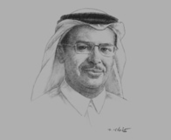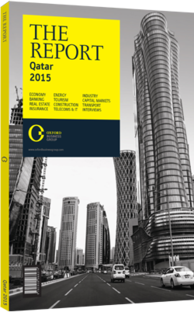Hamad Rashid Al Mohannadi, CEO, RasGas: Interview

Interview: Hamad Rashid Al Mohannadi
In view of the upcoming opening of Train 1 of the Barzan Gas Project (BGP), how is the gas being allocated for the domestic market?
HAMAD RASHID AL MOHANNADI: Train 1 is nearly complete and is expected to come on-line in 2015, followed by Train 2 later in the year. We are very proud to be progressing both safely and efficiently. When completed, BGP’s natural gas production will be sold to stateowned company Qatar Petroleum for distribution to the domestic market. BGP’s gas will also be primarily used by the power and water generation sectors to provide cleaner, natural gas to several of Qatar’s new projects that are either under way or completed. These projects range from new cities, hospitals, education facilities, Hamad International Airport and 2022 FIFA World Cup infrastructure projects to other industrial developments. Once BGP Trains 1 and 2 come on-line, RasGas will have a production capacity of 11bn standard cu feet per day, making it one of the world’s largest gas producers.
Considering the high demand for helium and the facilities coming on-line at Barzan, what plans are in place to boost the production of helium?
AL MOHANNADI: Global demand for helium as well as demand growth have been constrained by supply since 2009. With global market demand for helium rising by 2-3% annually in the medium-term, the additional reliable supply that comes from Qatar’s Helium 2 facility sustains global demand. Since RasGas’ second facility came on-line in the second half of 2013, Qatar has become the world’s largest exporter of liquid helium. RasGas currently supplies close to 30% of the world’s total helium production.
RasGas is continuously evaluating opportunities to capitalise on market trends and needs. The evaluation and plans for a third helium facility need to take into account a number of factors including market demand, economic viability and natural gas production volumes. We, along with our shareholders, are currently in the final stages of studying the viability of another helium project.
How concerned are you about competition from Australian liquefied natural gas (LNG) production, given its close proximity to your Asian customers?
AL MOHANNADI: Between now and 2020, Asia’s appetite for LNG is set to grow rapidly and Qatar is projected to safely and reliably deliver increasing volumes to both established and new customers in the region. This growth is good news for all LNG suppliers – including those from Australia and Qatar – who have placed a large majority of their volumes in the market on a long-term basis.
In the near-term, we anticipate competition for new sales to be limited to the placement of liquid market volumes and any incremental new or expansion production capacities.
At RasGas, we remain very optimistic about the continued growth of demand for natural gas throughout the world, and we look forward to meeting the requirements of potential customers as well as their growing energy needs. While geographic proximity is definitely a consideration, customers also look for reliability, availability and flexibility of supply and therefore Qatar is well positioned to compete in all LNG markets with its 77m tonnes of existing LNG production and shipping capacity.
Analysts have predicted Qatar will have a falling market share in the LNG industry coupled with lower prices. How is the industry bracing itself for a less favourable operating environment?
AL MOHANNADI: It is generally not our practice to comment on speculation or forecasts by analysts. However, what we can tell you is that all of RasGas’s LNG production is committed on a long-term basis with prices that are indexed in order to reflect market conditions and we are also well positioned to continue to supply our customers with clean energy.
You have reached the limit of premium articles you can view for free.
Choose from the options below to purchase print or digital editions of our Reports. You can also purchase a website subscription giving you unlimited access to all of our Reports online for 12 months.
If you have already purchased this Report or have a website subscription, please login to continue.

